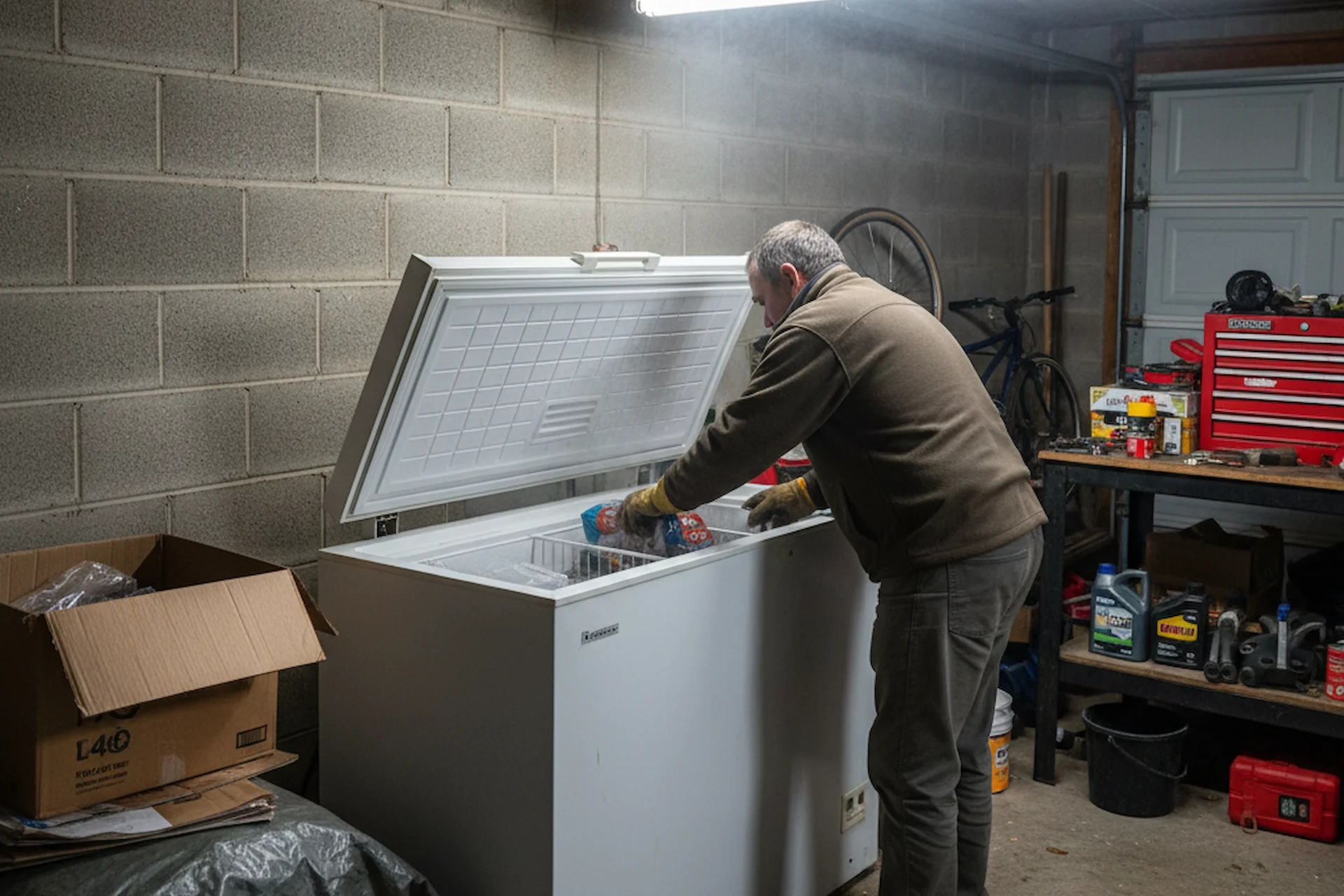
Question: What Are the Disadvantages of a Chest Freezer?
Answer: Disadvantages of chest freezers include their large size, which can make organization difficult as items get buried at the bottom. This poor accessibility can be challenging, and most models require inconvenient manual defrosting. They also typically lack an auto-light feature.
The Drawbacks of a Chest Freezer
Chest freezers offer an excellent solution for long-term food storage. They allow you to buy food in bulk, save money, and preserve seasonal produce. Homeowners often appreciate their large capacity and energy efficiency. These appliances hold their temperature well, even during short power outages. Their simple design means they often have a long lifespan with few mechanical issues. For many families, a chest freezer is a valuable addition to their home, providing peace of mind and convenient access to a wide variety of frozen goods.
However, this appliance is not suitable for every person or every home. Potential buyers should understand the disadvantages of a chest freezer before making a purchase. These drawbacks can impact your daily routine, your home’s layout, and even your food budget if not managed properly. Issues like space consumption, difficult organization, and demanding maintenance are significant factors. A clear understanding of these problems helps you decide if the benefits truly outweigh the challenges for your specific situation. This article details the primary disadvantages you will encounter with a chest freezer.
They Demand a Large Footprint
One of the most immediate disadvantages of a chest freezer is its substantial size. These appliances are designed to be wide and deep, which means they occupy a significant amount of floor space. Unlike an upright freezer that uses vertical space, a chest freezer spreads out horizontally. This design can be very difficult to accommodate in smaller living spaces such as apartments, condos, or homes with limited storage areas. You must measure your available space carefully before buying one, ensuring there is enough room for the unit itself and for you to open the lid fully.
Proper placement also requires extra consideration. Chest freezers generate heat and need adequate ventilation to operate efficiently. You must leave several inches of clear space around the back and sides for air to circulate. This requirement further increases the total footprint of the appliance. Due to their size and ventilation needs, people often place chest freezers in garages, basements, or utility rooms. This out-of-the-way placement can make accessing your frozen food less convenient for daily meal preparation, forcing you to make trips to another part of your home.
Please visit this page to read more about Blue Kitchen Refacing
Related Article: Does Food Last Longer in a Chest Freezer?
Related Article: All About Chest Freezers
Manual Defrosting Is Time-Consuming
Most chest freezers are not frost-free. This means that over time, ice crystals from moisture in the air will build up on the interior walls. This frost accumulation reduces the available storage space and makes the freezer work harder to maintain its temperature. An inefficient freezer uses more electricity, which increases your energy bills. To keep the appliance running correctly, you must manually defrost it periodically, usually once or twice a year, depending on usage and humidity levels.
The manual defrosting process is a major chore. First, you must empty the entire freezer and find a temporary cold place to store all your food. Then, you unplug the unit and wait for all the ice to melt, which can take several hours. Some models have a drain plug to help manage the melting water, but it can still be a messy job. After the ice is gone, you must clean and dry the interior thoroughly before turning it back on, waiting for it to cool, and then reloading all your food. This inconvenient and time-consuming task is a significant drawback for many people.
They Are Bulky and Hard to Move
The physical design of a chest freezer presents another practical disadvantage: it is very difficult to move. These appliances are heavy and have an awkward, boxy shape. Lifting and carrying one safely almost always requires at least two strong people. Their width makes them challenging to manoeuvre through standard doorways, down narrow hallways, or around tight corners. If you ever plan to move to a new home, transporting your chest freezer will be a considerable logistical challenge that may require professional help.
Even small adjustments within a room are difficult. Unlike a refrigerator that often has wheels, most chest freezers sit flat on the floor. Repositioning the unit to clean behind it or to rearrange a room is not a simple task. This lack of portability is a key consideration, especially for renters or anyone who anticipates changing their living situation in the future. The initial delivery and installation can also be complicated, particularly if the freezer needs to go into a basement with a narrow staircase. Its unwieldy nature is a permanent inconvenience.
Power Failures Pose a Significant Risk
While a chest freezer retains cold air better than an upright model, a prolonged power outage still poses a major threat. A fully stocked chest freezer can contain hundreds of dollars worth of food. If the power is out for an extended period, typically more than 24 to 48 hours depending on the model and ambient temperature, that food will begin to thaw. Once it thaws, much of it may not be safe to refreeze, leading to a massive amount of food waste and a significant financial loss.
This risk is amplified if the freezer is located in a garage or basement. In these locations, a tripped circuit breaker or a localized power issue might go unnoticed for a long time. You might only discover the problem after the food has already spoiled. The cleanup process following such an event is extremely unpleasant. You must dispose of the spoiled food and then deep clean the freezer to remove powerful, lingering odours. For anyone living in an area with frequent power interruptions, this potential for catastrophic food loss is a serious disadvantage of a chest freezer.
Is a Chest Freezer the Right Choice for You?
A chest freezer provides an effective way to store large quantities of frozen food for a long time. Its energy efficiency and large capacity are compelling benefits for many households. However, the disadvantages of a chest freezer are equally important to consider. The appliance demands a large amount of floor space, which can be a deal-breaker for those in smaller homes. Its deep design makes organization a constant struggle, often leading to forgotten food and waste. You must be prepared to handle the inconvenient and messy task of manual defrosting on a regular basis.
Before you commit to a purchase, you should honestly evaluate your home and lifestyle. Do you have a suitable location with enough space and ventilation? Are you willing to implement and maintain a careful inventory system to keep track of your food? Do you have the physical ability to dig for items and to undertake the defrosting process? If the answer to these questions is no, a chest freezer might create more frustration than convenience. Alternatives like a smaller upright freezer or a refrigerator with a large freezer section may better suit your needs, offering easier access and frost-free operation without the significant drawbacks.

Blue Malue Get in touch with Blue here.
